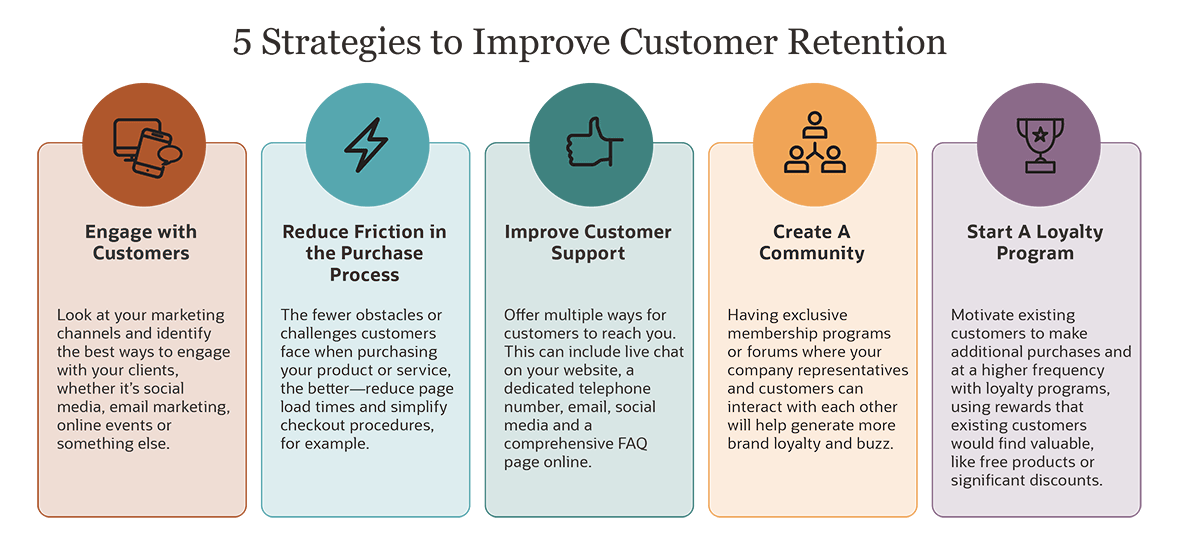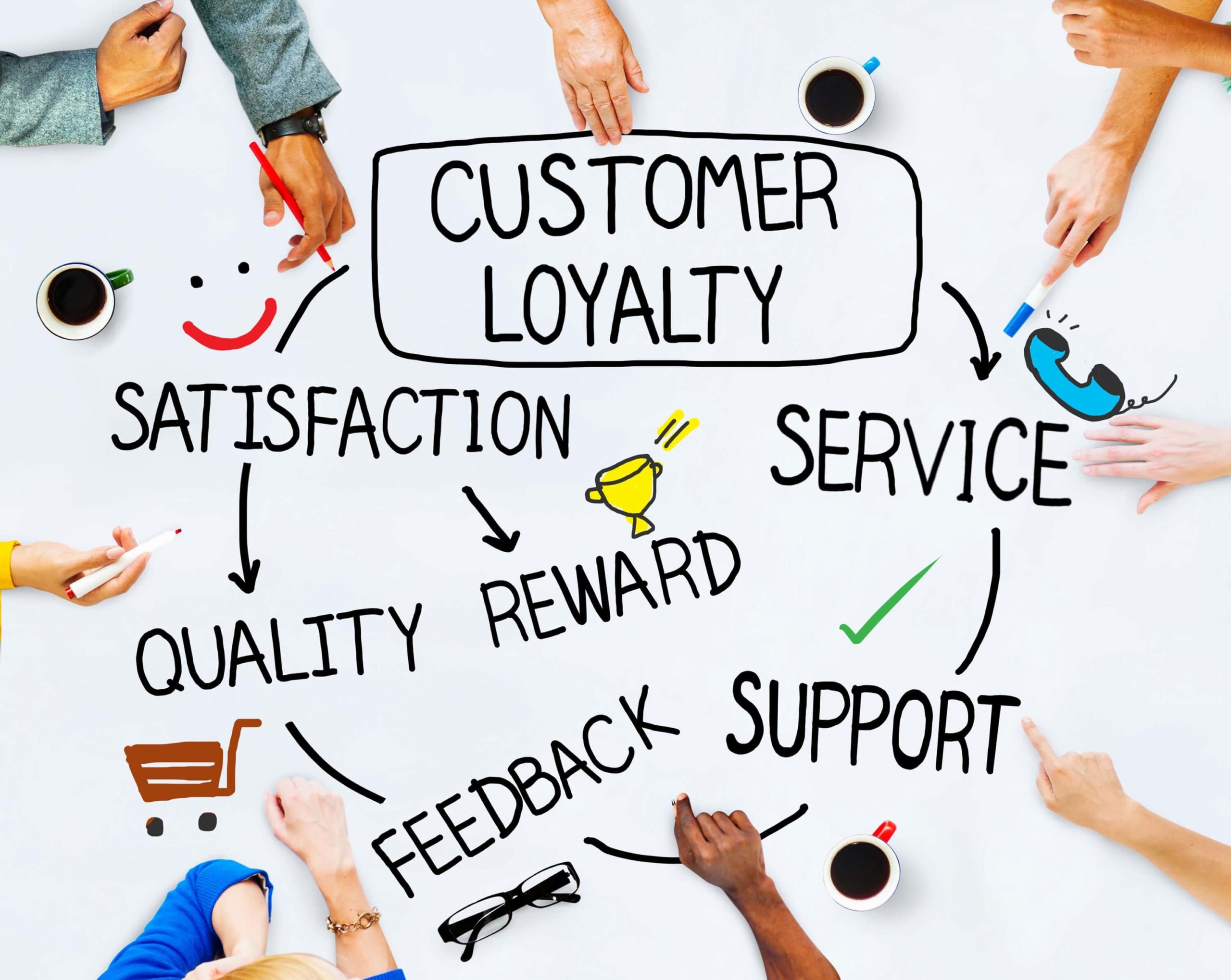How to Improve Customer Retention in Small Business

In the bustling world of small businesses, customer retention is the lifeblood that keeps the engine running. Imagine a garden where each customer is a precious plant. Just as a gardener nurtures their plants to ensure they grow and thrive, a small business owner must cultivate customer loyalty to foster business growth. But how do you keep your customers coming back for more? Let's dive into the essential strategies that can transform your customer retention efforts and drive your business to new heights.
Understanding Customer Retention
Customer retention is more than just a buzzword; it's a critical component of business success. It's about building lasting relationships with your customers, ensuring they are satisfied, and encouraging them to return. According to a study by Bain & Company, increasing customer retention rates by just 5% can boost profits by 25% to 95%. That's a staggering figure that underscores the importance of retention strategies.
Why Customer Retention Matters
Customer retention is not just about keeping your current customers happy; it's about creating a sustainable business model. Acquiring new customers can be up to five times more expensive than retaining existing ones. By focusing on customer retention, you can reduce marketing costs, increase customer loyalty, and ultimately drive business growth.
Building a Strong Foundation for Customer Retention
The first step in improving customer retention is to build a strong foundation. This involves understanding your customers' needs and preferences, delivering exceptional customer service, and creating a seamless customer experience.
Know Your Customers
Understanding your customers is the cornerstone of any successful retention strategy. Conduct customer surveys, analyze customer data, and engage with your customers on social media to gain insights into their preferences and pain points. Tools like SurveyMonkey can help you gather valuable feedback.
Deliver Exceptional Customer Service
Exceptional customer service is the backbone of customer retention. Ensure that your customer service team is well-trained, responsive, and empathetic. Use customer service software like Zendesk to manage customer inquiries efficiently and provide timely support.
Create a Seamless Customer Experience
A seamless customer experience is crucial for customer satisfaction. From the moment a customer interacts with your brand to the point of purchase and beyond, every touchpoint should be smooth and hassle-free. Utilize customer experience platforms like Qualtrics to map out the customer journey and identify areas for improvement.
Implementing Effective Retention Strategies
Once you have a strong foundation, it's time to implement effective retention strategies. These strategies should be tailored to your business and customer base, focusing on building customer loyalty and enhancing customer satisfaction.
Loyalty Programs
Loyalty programs are a powerful tool for improving customer retention. Offer rewards, discounts, and exclusive perks to your loyal customers. For example, Starbucks Rewards program allows customers to earn stars for every purchase, which can be redeemed for free drinks and food.
Personalized Communication
Personalized communication can make your customers feel valued and appreciated. Use customer relationship management (CRM) software like Salesforce to segment your customer base and send targeted emails, SMS, and push notifications. Personalize your messages based on customer preferences and purchase history.
Customer Feedback and Improvement
Customer feedback is invaluable for improving your products and services. Encourage your customers to provide feedback through surveys, reviews, and social media. Use this feedback to make continuous improvements and show your customers that you value their input.

Educational Content
Providing educational content can help your customers make informed decisions and build trust in your brand. Create blog posts, videos, and webinars that address common customer questions and provide valuable insights. For example, a small business selling organic skincare products could create a blog post on the benefits of natural ingredients.
Community Building
Building a community around your brand can foster a sense of belonging and loyalty. Create online forums, social media groups, and in-person events where your customers can connect with each other and your brand. For example, Lululemon hosts community events and yoga classes to engage with their customers.
Measuring and Analyzing Customer Retention
Measuring and analyzing customer retention is essential for understanding the effectiveness of your strategies and making data-driven decisions. Use key performance indicators (KPIs) such as customer lifetime value (CLV), churn rate, and net promoter score (NPS) to track your progress.
Customer Lifetime Value (CLV)
Customer lifetime value (CLV) is a measure of the total revenue a business can reasonably expect from a single customer account throughout the business relationship. Calculate CLV to understand the long-term value of your customers and allocate resources accordingly.
Churn Rate
Churn rate is the percentage of customers who stop doing business with your company over a specific period. Monitor your churn rate to identify trends and areas for improvement. Use churn analysis tools like ChurnZero to gain insights into why customers are leaving and how to retain them.
Net Promoter Score (NPS)
Net promoter score (NPS) is a measure of customer satisfaction and loyalty. Ask your customers how likely they are to recommend your business to others on a scale of 0 to 10. Use the NPS to identify promoters, passives, and detractors, and take action to improve customer satisfaction.
Overcoming Challenges in Customer Retention
Improving customer retention is not without its challenges. Common obstacles include competition, changing customer preferences, and limited resources. However, with the right strategies and mindset, you can overcome these challenges and achieve success.
Staying Ahead of the Competition
In a competitive market, standing out from the crowd is crucial. Differentiate your business by offering unique products, exceptional customer service, and a memorable customer experience. Continuously innovate and adapt to stay ahead of the competition.
Adapting to Changing Customer Preferences
Customer preferences are constantly evolving, and it's essential to stay in tune with these changes. Conduct regular market research, gather customer feedback, and be willing to pivot your strategies to meet changing demands.
Managing Limited Resources
Small businesses often face the challenge of limited resources. Prioritize your retention strategies based on their potential impact and return on investment. Focus on high-value customers and allocate resources where they will have the most significant impact.

Conclusion
Improving customer retention in small business is a journey that requires dedication, innovation, and a customer-centric mindset. By understanding your customers, delivering exceptional service, implementing effective retention strategies, and continuously measuring and analyzing your efforts, you can build a loyal customer base and drive business growth. Remember, every customer is a precious plant in your garden, and with the right care and nurturing, they can bloom and flourish, contributing to the overall beauty and success of your business.
So, are you ready to transform your customer retention efforts and take your small business to new heights? The journey starts with a single step, and every customer interaction is an opportunity to build lasting relationships. Embrace the challenge, and watch your business grow and thrive.
FAQs
What is customer retention, and why is it important for small businesses? Customer retention refers to the activities and strategies a business employs to keep customers returning. It's important for small businesses because retaining customers is more cost-effective than acquiring new ones, and it leads to increased customer loyalty and business growth.
How can I measure customer retention effectively? You can measure customer retention using key performance indicators (KPIs) such as customer lifetime value (CLV), churn rate, and net promoter score (NPS). These metrics provide insights into customer satisfaction, loyalty, and the overall health of your retention strategies.
What are some effective retention strategies for small businesses? Effective retention strategies include implementing loyalty programs, personalizing communication, gathering and acting on customer feedback, providing educational content, and building a community around your brand.
How can I stay ahead of the competition in customer retention? To stay ahead of the competition, differentiate your business by offering unique products, exceptional customer service, and a memorable customer experience. Continuously innovate and adapt to changing customer preferences.
What should I do if I face challenges in improving customer retention? If you face challenges in improving customer retention, prioritize your strategies based on their potential impact and return on investment. Focus on high-value customers and be willing to pivot your strategies to meet changing demands and overcome obstacles.
Belum ada Komentar untuk "How to Improve Customer Retention in Small Business"
Posting Komentar